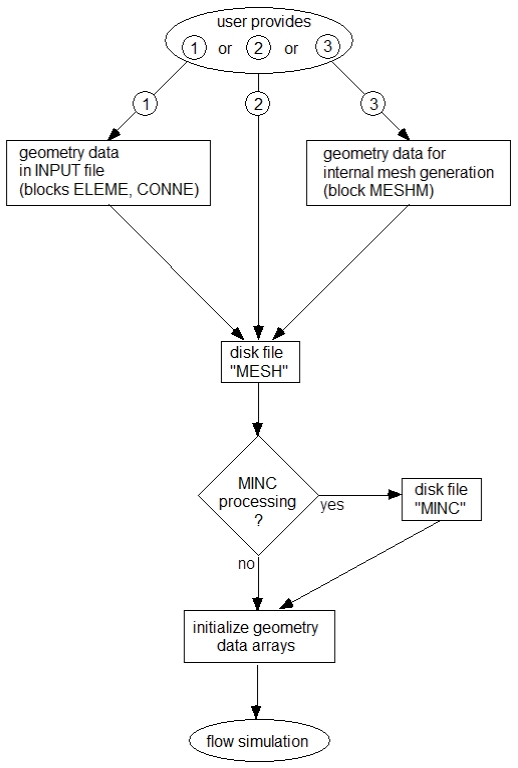General Concepts
Flow geometry in TOUGH is defined by means of a list of volume elements ("grid blocks") and a list of flow connections between them, as in other "integral finite difference" codes (Edwards, 1972; Narasimhan and Witherspoon, 1976). This formulation can handle regular and irregular flow geometries in one, two, and three dimensions. Single- and multiple-porosity systems (porous and fractured media) can be specified, and higher-order methods, such as seven- and nine-point differencing, can be implemented by means of appropriate specification of geometric data (Pruess and Bodvarsson, 1983).
In TOUGH4, volume elements are identified by names that consist of a string of by default five characters, unless a different length of element names is specified in data record MODDE.2. The names are arbitrary. Flow connections are specified as ordered pairs of elements, such as “(ELE10, ELEll)”. A variety of options and facilities are available for entering and processing geometric data (see Figure 27). Element volumes and domain identification can be provided by means of a data block ELEME in the input file, while a data block CONNE can be used to supply connection data, including interface area, nodal distances from the interface, and orientation of the nodal connection line relative to the vertical. These data are internally written to a file MESH, which in turn initializes the geometry data arrays used during the flow simulation. It is also possible to omit the ELEME and CONNE data blocks from the main input file, and provide geometry data directly on a file MESH.
